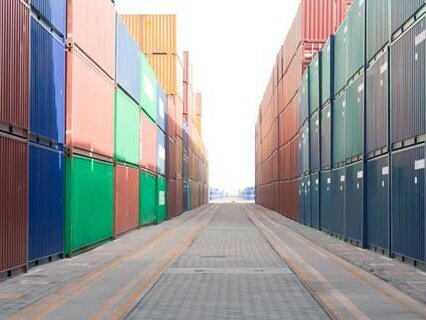TT Talk: How crane snags can be prevented before they occur

Preventive anti-snag systems combined with data analytics and radio-frequency identification (RFID) safety protocols are among the latest proactive measures being adopted by modern terminals to safeguard assets, personnel and business continuity. These technologies are vital for preventing STS crane incidents, improving container terminal safety and ensuring supply chain security.
Snag loads can put huge stresses and strains on the structure, mechanical components and wire ropes of STS cranes, which can lead to damage and unplanned outages through post-snag-load investigation and subsequent repair. Likewise, repeated overloading from snagged containers can affect the service life of these critical front-line assets for ports and terminals.
Preventative systems
With the operational demands placed on STS cranes set to intensify – driven by larger vessels, faster cycle times and higher throughput expectations – much work is being done to advance anti-snag-load systems. The approach is shifting from reactive detection of snag overloading after it has already happened, such as with load cells or hydraulics, to a preventive one which avoids it from happening in the first place.
The latest anti-snag systems can prevent potential snag situations during both STS hoisting and lowering operations by combining real-time measurements from inclinometers, accelerometers and load cells with machine learning analytics. They communicate with the STS control system to stop crane movements quickly and safely before there is any mechanical overstress.
The systems can avoid or at least minimise damage to crane ropes and structures, which is a key aspect of effective STS crane maintenance, allowing a faster restart of normal operations and reducing maintenance costs and impact on STS productivity.
Data analytics and RFID systems
Beyond snag incident prevention, Industrial Internet of Things (IIoT) platforms are also enabling terminals to capture and analyse crane operational data in real time. This approach supports predictive maintenance for ports by anticipating equipment wear and failure.
Metrics such as crane motion intensity, operational stress and impact events offer new insights for operational and maintenance decision making.
IoT platforms can complement anti-snag systems by providing real-time dashboards, automated reporting and predictive maintenance alerts while integrating easily with terminal operating systems.
Another innovation gaining traction involves the use of RFID-based detection systems to manage operational zones around STS cranes. RFID safety systems are increasingly being integrated into automated terminal operations for better risk mitigation.
By identifying the use of people cages, over-height frames and lashing equipment, these systems can trigger automatic adjustments to operational modes, minimising the risks associated with human error or procedural oversight.
Benefits to terminals
Terminals adopting the latest anti-snag systems and associated analytics solutions have reported measurable improvements. These include a reduction in unplanned crane downtime and mechanical damage incidents, enhanced maintenance scheduling through predictive analytics, and lower incident frequency and severity – potentially contributing to reduced insurance claims.
It has also been possible to create new operational key performance indicators to improve staff training and planning. These can be linked to real-time port analytics to optimise performance.
Conclusion
As container terminal operations grow in scale and complexity, investment in proactive safety and operational intelligence technologies is no longer optional. From anti-snag protection to real-time analytics and asset detection systems, these integrated tools are becoming indispensable components of resilient, high-performance port operations.
TT Club thanks Jose García of SIBRE for providing the basis for this article. Its SLP - Snag Load Protection system, Guardian IoT platform and Reader RFID add-on module are supporting the global move towards safer and more automated terminal environments.
A snagged container can result in serious overload damage to ship-to-shore cranes
Advanced anti-snag systems can predict snags before they occur
RFID detection means cranes can automatically spot riskier lifts, such as people cages
Documents
TT_Talk_-_Edition_323__Chinese_.pdf (592 kB) 09/10/2025
- Author
- Mike Yarwood
- Date
- 09/06/2025





